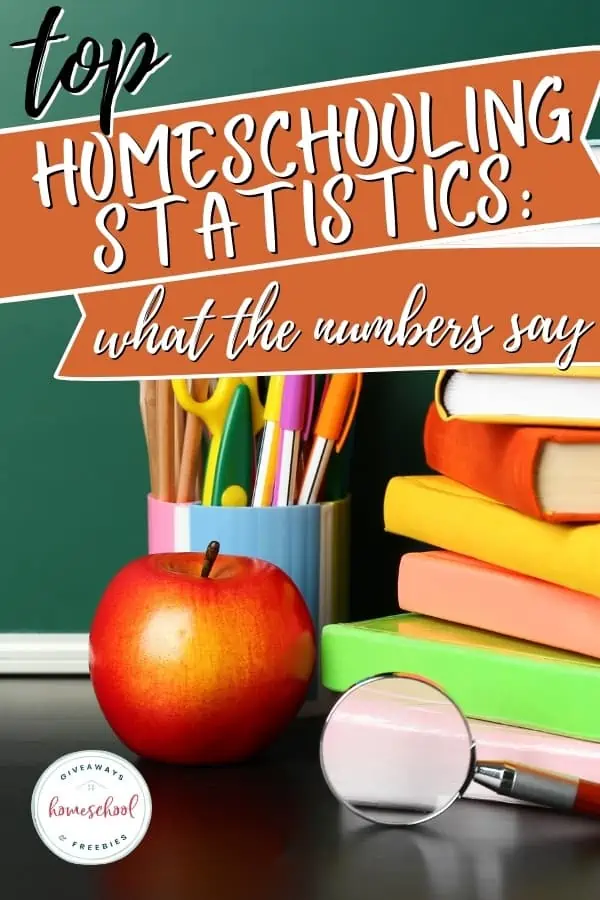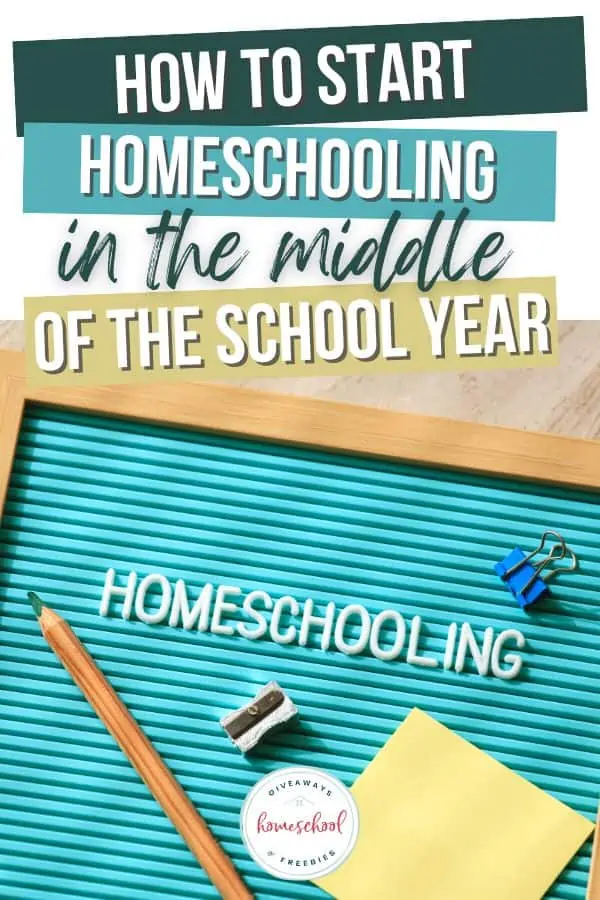Top Homeschooling Statistics: What the Numbers Say
Published:
June 6, 2022

Contributor:
Alpha Omega Publications
Disclosure: This post may contain affiliate links, meaning if you decide to make a purchase via my links, I may earn a commission at no additional cost to you. See my disclosure for more info.
Homeschool statistics are always fun to look at, especially when you think the homeschool community is growing around you and then you see that the data supports it! Check out the amazing growth of homeschooling in the United States over the last few years.
Homeschool Statistics
While homeschooling has continued to explode in growth for the last several years, there are a few homeschool trends to keep an eye on.
What is the success rate of homeschooling?
The success rate of homeschooling is very encouraging! When parents first consider homeschooling, they want to know whether it will help their children to be more successfully academically and in life. Here’s what the numbers tell us.
Homeschoolers and College Graduation Rates
67% of homeschool students attend college after homeschool and graduate, which is quite a leap from 59% of their public school counterparts. We also know that one-quarter of homeschooled children are enrolled above their grade level. No matter the education level of homeschool parents, their children tend to score in the 80-90% range on standardized tests.
Homeschoolers and Outside Activities
And while many people think of homeschooled kids as being reclusive or not out in the community, the numbers tell a different story. A whopping 98% of homeschool students are involved in an average of 5 activities outside the home. (1)
Community Service
One final note on success. If your goal is to raise an adult that is connected and involved in the community, then you’ll be happy to know that homeschool graduates participate in local community service at a higher rate than the general population. (2)
Are homeschoolers happier?
Yes, homeschool studies do show that homeschoolers are happier than their peers in public schools. This connection to the community through more volunteer activities and attending events like religious services does fare well for homeschoolers. In fact, a new Harvard study found that homeschool students show higher levels of forgiveness along with more of a connection to religious institutions, which leads to lower rates of depression and suicide. (3)
Ying Chen of the Harvard Human Flourishing Program found another reason to believe that homeschoolers are on average happier than children in traditional schools, and this has to do with social media influence.
Chen commented, “Some prior studies suggested that such increasing smartphone use may have contributed to the recent huge spikes in adolescent depression, anxiety, and school loneliness. Cyberbullying, sexting and ‘phubbing’ have also become more common in children’s daily lives, especially in school settings. We might expect that these issues may be less common among homeschoolers than their public school peers.” (3)
Is homeschool more effective?
Homeschool can be more effective and yield better results than private schools and public schools. Here are some interesting homeschool statistics to consider.
Standardized Testing Stats
While the public school average on standardized academic testing is in the 50th percentile, homeschool students tend to score between 15-30 percentile points higher. (4) And these better results on test scores has nothing to do with the education level of homeschooling parents.
We also know that homeschool graduates are being actively recruited by colleges, even as they score higher on the ACT and SAT than their public school peers.(4)
Homeschooling can be more effective for kids with special needs as well. Homeschool parents are able to create a custom education that many times is more effective than what the public school could do. This comes down to the 1-to-1 aspect of a homeschool parent to a child. Public schools just can’t replicate that!
Are homeschoolers smarter than public schoolers?
Whether or not homeschoolers are smarter than public schoolers, they do on average score better on standardized tests. Here are some homeschooling facts showing high academic achievement from homeschoolers on average.
- Homeschoolers score higher than their public school peers, regardless of parent’s education levels or racial or socio-economic status. (5)
- One study of 1,952 homeschoolers found that they scored at the 80th percentile or higher across every test category (5)
Dr. Brian Ray, president of the National Home Education Research Institute, analyzed standardized testing data from all 50 states and 11, 739 homeschooled students and came to this conclusion:
“Overall the study showed significant advances in homeschool academic achievement as well as revealing that issues such as student gender, parents’ education level, and family income had little bearing on the results of homeschooled students.” (5)
Homeschool Statistics Broken Down
Here’s how the homeschool statistics look over various categories.
Homeschool Growth Rate Over the Years
The homeschool growth rate over the years has been impressive. While the number of students being homeschooled had been steadily growing by 2% to 8% each year, the percentage of homeschooled students in the U.S. skyrocketed between 2019-2020 from 3.4% to 9% (1) This represents a growth in the number of school-age children being homeschooled from pre-pandemic 2019 (2.5 million students) to the most recent accounting of 3.7 million between 2020-2021. (4)
Homeschooling in Minority Communities
The largest increases recently have been in minority communities, where 41% of U.S. households are non-white/non-Hispanic. (4)
How many children are homeschooled in the US?
The homeschool population of K-12 students in the U.S. was at 5 million students, according to the United States Census Bureau Household Pulse Survey (6). That’s up from 3.2 million the year before.
The Homeschool Legal Defense Association reports that homeschooling hit its high point in August 2020 at 6.8 million students (6). But instead of dropping off precipitously after schools resumed operations in 2021, the percentage of homeschooled students in the U.S. remained high at about five million.
Homeschool Demographic Statistics
Homeschool demographic statistics show that homeschooling is popular across a wide range of households. In fact, the U.S. Department of Education found that 41% of homeschooled children are Asian, Hispanic, and black students. (4) And while every racial demographic is included in the homeschool population, you’ll also find that nearly every other data point can be found in homeschool families, such as:
- parents with a bachelor’s degree, some with a GED, others with a PhD, and some with no high school diploma at all (4)
- Christian homeschool families, Mormons, atheists, and secular families are all found in the homeschool demographics (4)
- families of every political stripe, including conservative, liberal, and libertarian (4)
Graduation Rate Statistics
The graduation rates are better for homeschool students when compared to their public school peers. Education statistics show that the average graduation rate is 67% for homeschooled students. Public school students have a lower graduation rate, at about 57.5% (1)
So while homeschool families are seeing success in graduating their children, they are also seeing great success in the future college, community, and workforce involvement of their graduates, according to a recent study conducted with homeschool graduates. (4)
Cost of Homeschooling Statistics
Recent statistics of homeschool families of school-aged children show that the average family spends $300-600 per year per child for curriculum, resources, books, and educational activities (7) Compare this to the cost of public school education to American taxpayers.
The National Education Association says that taxpayers spend an average of $15,240 per student annually in the public school system. (4) Homeschooling saves the government about $24 billion per year. (1)
Statistics on Hours Spent Homeschooling
Of course, one of the biggest “costs” of homeschooling will be the time that homeschool parents invest in the process. While the grade level of your children will determine how independently they can work, American parents are investing a lot of time into homeschooling.
Half of all families report that their children in grades K-12 are spending between 25 to 40 hours of week in formal education. (1) This number can vary wildly, as most homeschool regulations in the U.S. let the parents determine the amount of time their children are learning during the school year. Another 28% learned between 11 to 24 hours per week, while the final 21% clocked in at 1 to 10 hours of weekly learning. (1)
Reasons Families Choose to Homeschool Statistics
The reasons families choose to homeschool shows a great variety in the homeschool statistics. From addressing special needs to wanting to offer religious instruction, here are the reasons why families homeschool.
- 50% of families wanted to offer a safe school environment for their kids (1)
- 35% of families cited being able to give their kids a customized education with individualized attention as their main reason (1)
- 30% of parents were worried about bullying and negative peer pressure (1)
Reasons Families Choose NOT to Homeschool Statistics
For many families the benefits of homeschooling outweigh the challenges or costs. But a number of parents do decide not to homeschool. Here are the reasons why.
- 46% of homeschool parents wanted to help keep their child’s school friendships in tact (1)
- Another important reasons why families choose not to homeschool is that 37% felt that they would have a hard time balancing both work and homeschool responsibilities (1)
- 30% of black parents cited concerns about being able to financially afford academic resources for their children if they homeschooled (1)
Statistics on Academic Performance of Homeschoolers
Homeschool students continue to perform well academically. They routinely score 15-30 percentile points higher than the national average on standardized tests in K-12. (1) On the SAT, homeschool students average 72 points higher than the nationwide mean (1). And the graduation rate is 10 percentage points higher for homeschooled students compared to the national average, at 67% compared to 57.5% (1).
Which state has the most homeschoolers?
Alaska has the highest homeschooling rate at 6%, followed by North Carolina at 5% (8). In addition, the states with the largest percentage change enrollment out of public schools between the years 2019/20 and 2020/21 are Mississippi and Vermont (5% decline), Washington, New Mexico, Kentucky, New Hampshire, and Maine (4% or more decline) (9).
In Conclusion
Homeschooling continues to grow in the United States as families experience the freedom and joy of forging a love of learning together.
Sources:
(1) “Homeschooling Statistics.” ThinkImpact.com, 23 July 2021, https://www.thinkimpact.com/homeschooling-statistics/.
(2) Administrator. “The Kids Are Alright II: Social Engagement in Young Adulthood as a Function of K-12 Schooling Type, Personality Traits, and Parental Education Level.” National Home Education Research Institute, Administrator Https://Www.nheri.org/Wp-Content/Uploads/2020/09/Logo-New-Nheri.png, 26 Mar. 2022, https://www.nheri.org/the-kids-are-alright-ii-social-engagement-in-young-adulthood-as-a-function-of-k-12-schooling-type-personality-traits-and-parental-education-level/.
(3) McDonald, Kerry. “New Harvard Study: Homeschoolers Turn Out Happy, Well-Adjusted, and Engaged: Kerry McDonald.” FEE Freeman Article, Foundation for Economic Education, 17 Nov. 2021, https://fee.org/articles/new-harvard-study-homeschoolers-turn-out-happy-well-adjusted-and-engaged/.
(4). “Homeschooling: The Research, Scholarly Articles, Studies, Facts, Research.” National Home Education Research Institute, 26 Mar. 2022, https://www.nheri.org/research-facts-on-homeschooling/.
(5) Rachel WiseRachel Wise is a certified school psychologist and licensed behavior specialist with a Master’s Degree in Education. She is also the head author and CEO at educationandbehavior.com. “What Does the Research Say about the Impact of Homeschooling on Academics and Social Skills?” Education and Behavior, 16 Dec. 2021, https://educationandbehavior.com/what-does-research-say-about-homeschooling/.
(6) Dave Dentel Web Content Manager April 01, et al. “Census Data Shows Phenomenal Homeschool Growth.” HSLDA, https://hslda.org/post/census-data-shows-phenomenal-homeschool-growth.
(7) HSLDA November 20, et al. “Homeschooling on a Budget . . . or No Budget?” HSLDA, https://hslda.org/post/homeschooling-on-a-budget-or-no-budget.
(8) “Homeschooling by the Numbers.” Coalition for Responsible Home Education, 23 Mar. 2021, https://responsiblehomeschooling.org/research/summaries/homeschooling-numbers/.
(9) Press Release – Nation’s Public School Enrollment Dropped 3 Percent in 2020-21 – June 28, 2021, https://nces.ed.gov/whatsnew/press_releases/06_28_2021.asp.









